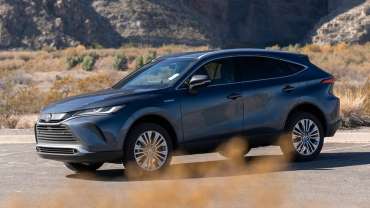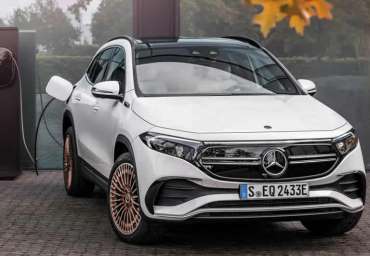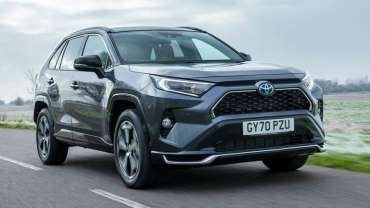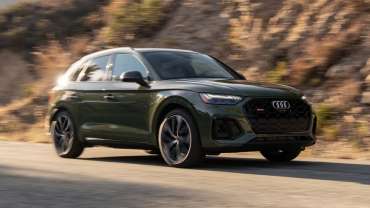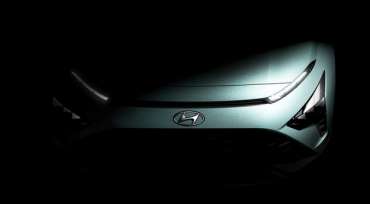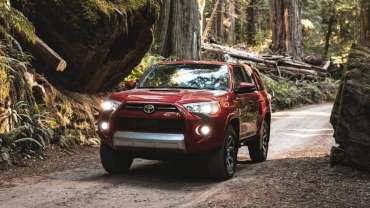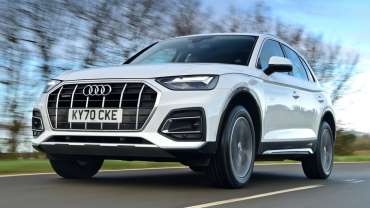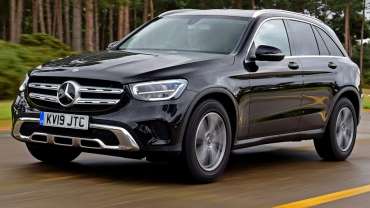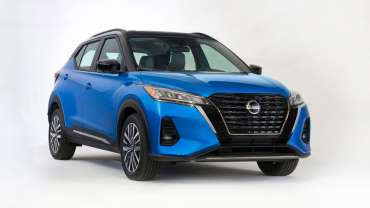Displaying items by tag: SUV
How Comfortable Is the 2021 Toyota Venza? We Road-Tripped for 4,000+ Miles
From Los Angeles to Houston and back.
I wrapped up 2020 the same way I started it, with a cross-country trip from Los Angeles to Houston. Last year I drove our long-term Volvo S60 to visit my family during the holidays and had such a great time that I decided to repeat it (and who knows, maybe it will become a tradition). This time, my chariot was our 2021 Toyota Venza—the hybrid-only SUV that serves as an alternative in Toyota's SUV lineup to the off-road-looking RAV4. I've chaperoned the Venza since October, but this was the first time I took it on a long road trip, and overall it excelled at its job. Instead of opting for the direct route, I went via the scenic way.
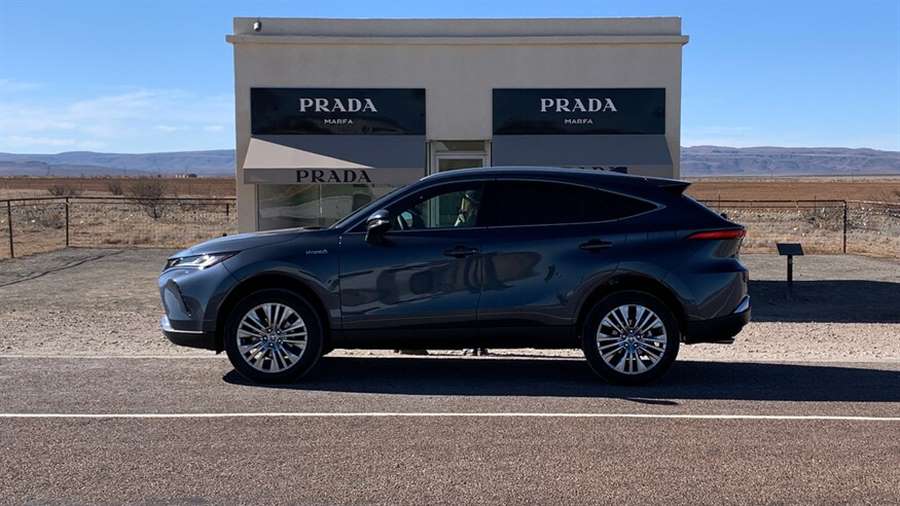
My road trip started before 5 a.m. when I left Playa del Rey and headed south to San Diego, where I then took I-8 to Tucson. Instead of taking the direct and boring way on the I-10, I opted for the more scenic route, driving through the Cuyamaca Mountains, the Imperial Sand Dunes and along the All-American Canal before ending on the I-10 between Phoenix and Tucson. After a quick lunch stop in Tucson, I continued onto El Paso, Texas, where I spent the first night. In total, I traversed 853 miles and averaged 33.5 mpg, according to the Venza's computer.
After 11 hours of driving, I found the seats very comfortable, providing great back and thigh support. The optional SofTex package—which includes leatherette seats, heated, ventilated, and powered front seats, and heated steering wheel—felt worth it. Crossing the desert in the winter means cold and hot temperatures throughout the day, so I used both the heating and ventilation often.
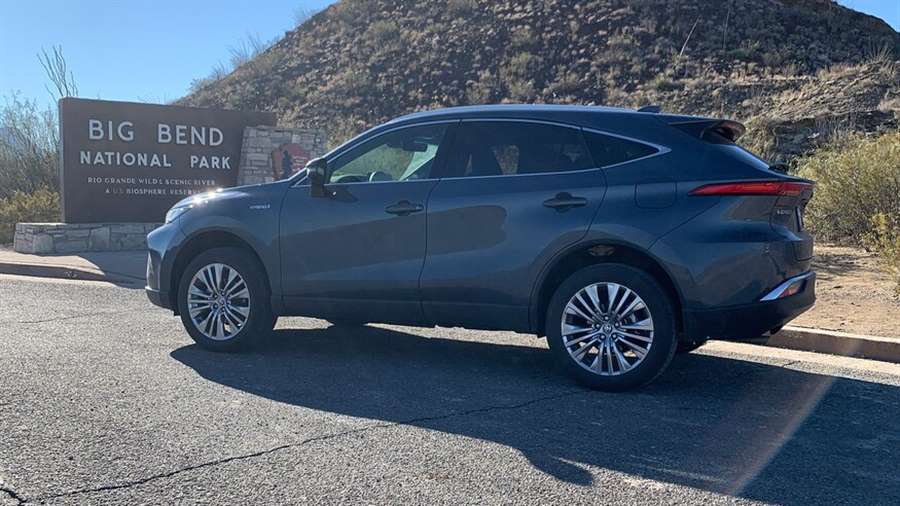
On day two I stopped in in Marfa, Texas, a town in the middle of the Chihuahuan Desert with chic shops and art galleries that will make you think you're on Abbott Kinney Blvd in Venice, California, or somewhere in Brooklyn. During a quick stop in the town of Valentine I visited the famous Prada sculpture that artists Elmgreen and Dragset permanently installed in the middle of the desert—a taste of what Marfa is really all about.
Highway 90 connects the desert cities of Marfa, Alpine, and Marathon in West Texas, and continues along the Rio Grande bordering Mexico. The drive is way more entertaining than I-10, with hills, river crossings, and swoopy corners at times. Border Patrol agents are seen almost every 15 minutes, and with a speed limit of 75 mph, this two-lane highway is captivating to drive. The Venza produces a good amount of tire noise, and the cabin was loud when we drove over harsh pavement, but the ride was always settled. With the 2.5-liter l-4 engine and three electric motors mated to a CVT, the Venza feels adequately powered, but it lacks the punchiness of turbo-four engines or thirsty V-6s of other SUVs in the segment.
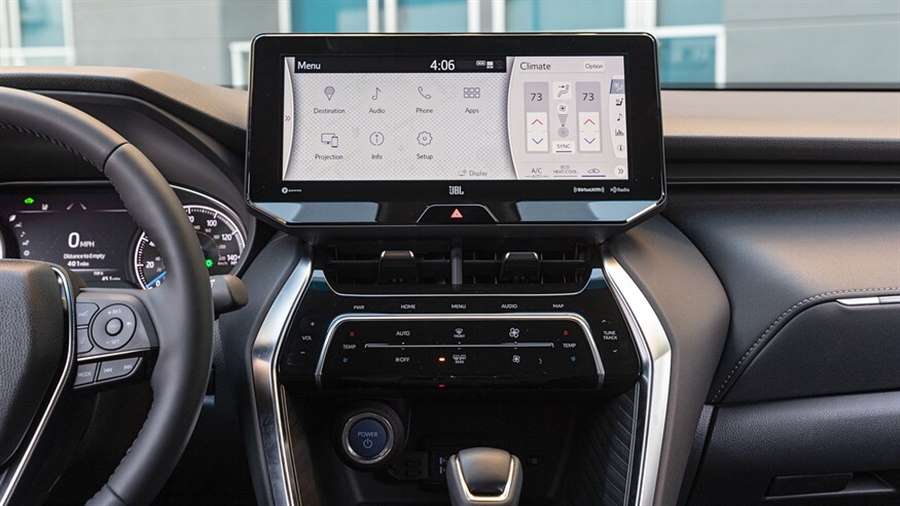
After a night stop in Del Rio, Texas, I headed north to the quaint town of Fredericksburg. Known for its wineries and German heritage, there's a cozy feeling walking on its sidewalks and seeing the historic Vereins-Kirche building. Nestled in the heart of the Texas Hill Country, Fredericksburg is home to many great roads and vistas. There's no doubt that central Texas was blessed with a fantastic landscape.
I arrived to Houston after driving 1,726 miles over three days, averaging 34.2 mpg. I confess I was getting tired toward the end of the road trip, but visiting all of these great places gave me a taste of Texas that I had not savored before despite having lived eight years in the Lone Star state.
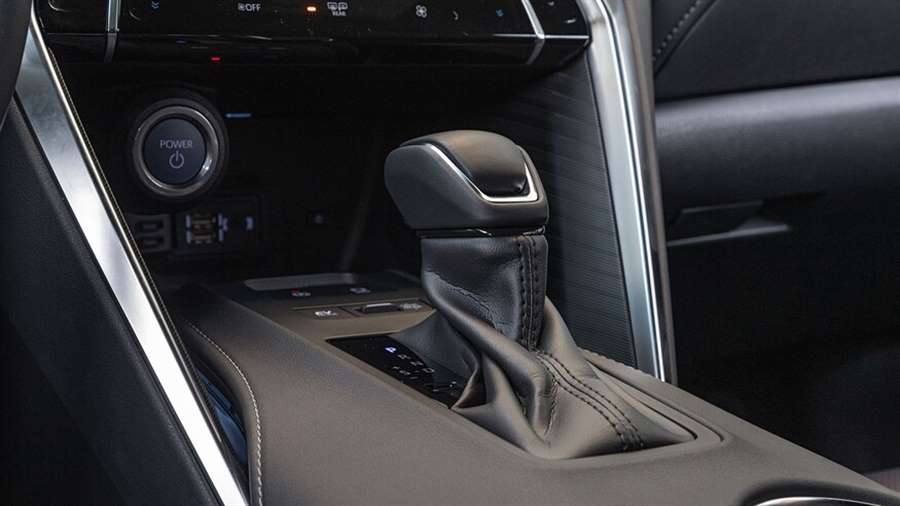
With my brother tagging along on the way back, the drive was more enjoyable. Our first stop was Big Bend National Park, but before we got to our hotel in Alpine, a massive winter storm dropped over 24 inches of snow in some parts of the state, making the roads icy and dangerous. On our drive to Alpine, we saw ice and snow on the road, but we made it to the hotel without any issues. Thankfully, the Venza comes with standard all-wheel drive, which was very useful during this part of the trip.
Big Bend National Park provides some of the most stunning vistas I've seen in my life. The Santa Elena Canyon's enormous walls are split by the Rio Grande, creating a natural division between Mexico and the U.S. Because the park also got a lot of snow, the basin, which is home to many trails, campgrounds, and a lodge, was closed. So we headed west to Big Bend Ranch State Park, taking FM 170, which follows the Rio Grande. With cliffs and hills on both sides of the border, the views were breathtaking, and the twisty turns made this road quite fun. I was most impressed with the landscape in this part of Texas—it seems like a well-kept secret compared to other places in the country. Note to self: Come back with a truck and off-road equipment; there's plenty of trails to experience.
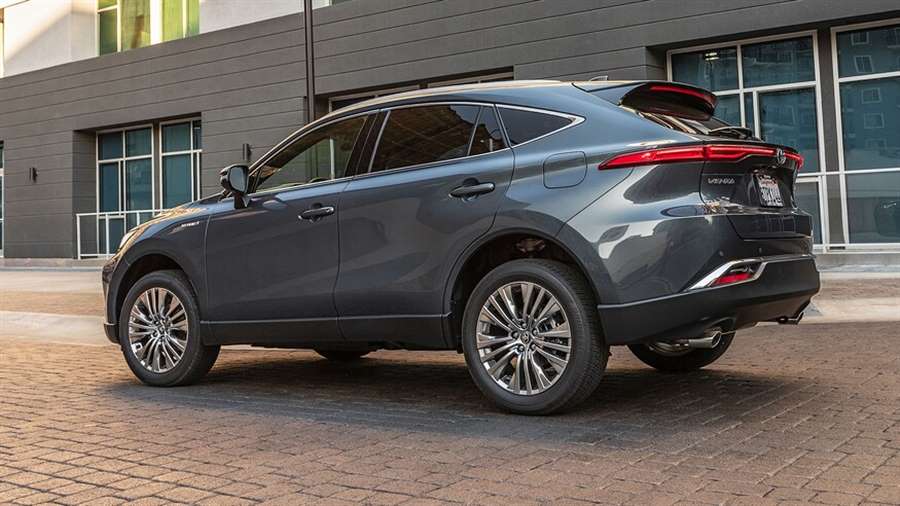
The next day we left Alpine for Tucson. We stopped at El Paso for lunch and noticed how close Ciudad Juarez really is from its northern sister city, as we got a panoramic view of it driving on I-10.
Sitting in the front passenger seat, my brother had quite a bit of trouble with the capacitive touch buttons on the center console. He'd confuse the temperature controls for the radio tuning controls and often hit the wrong button given that they are very touch-sensitive. One of the Venza's weakest points is interior space. Despite being positioned between the RAV4 and the Highlander, it has less space than even its smaller sibling. That was especially notable on the return trip when we were carrying two large suitcases, a bag of golf clubs, and a couple of biggish boxes. Even with the rear seats folded, cargo space is limited.
After a mostly boring drive, dozens of songs, and a couple of podcasts, we were happy to stop in Arizona for the night.
An early wake-up call had us on the road by 7:30, and we continued our way west on I-8. After our visit to White Sands National Park last year, we decided to visit the Imperial Sand Dunes in California for a Sahara-like experience. Although it's not nearly as impressive as the African desert, the scenery is beautiful, and it served as our last stop before we ended our trip.
With 4,020 miles added to the odometer, the Venza proved itself to be a comfortable and efficient SUV. At 33.2 mpg on average, that's a bit under the EPA's ratings, but weather and high speed limits are to blame. There will be more road trips with the Venza, and this one was a great start.
Photos of the road trip are courtesy of Andrés Cortina.
Source: motortrend.com
Manhart BMW X5 M with 823HP
German Manhart now offers the owners of the BMW X5 M Competition a new tuning program.
Manhart’s package to modify the BMW X5 M Competition primarily implies that the 4.4-liter V8 TwinPower Turbo engine is boosted from 625hp and 750 Nm to 823hp and 1080 Nm of torque.

The Manhart package also includes carbon fiber elements, a stainless steel sports exhaust system, a set of new 22-inch wheels, stronger brakes, modified suspension (the car is 30 mm lower), as well as gold details, Manhart emblems and a refined interior. alcantara, carbon fiber elements).
Manhart does not state data on acceleration to 100 km / h, so here is a reminder that the serial X5 M Competiton needs 3.8 seconds for that.
The same package will be offered for the BMW X6 M Comeptition.
Mercedes-Benz EQA review
Mercedes-Benz's latest EV is smoothly predictable
The latest new addition to Mercedes-Benz's growing line-up of electric cars is the EQA, the EV version of the existing GLA SUV. Although it looks like the aformentioned family car with a blanked-out nose, there's a lot of new technology under the skin, which will be shared with future models in the firm's EQ model range.
It's exactly the sort of product that the carmakers are telling us that buyers want right now – an electric SUV. And they're all rushing to build them for us, with the EQA's rivals including the upcoming BMW iX3, Ford Mustang Mach-E and Audi Q3 e-tron as well as the Volvo XC40 Recharge, which is already on sale in the UK.
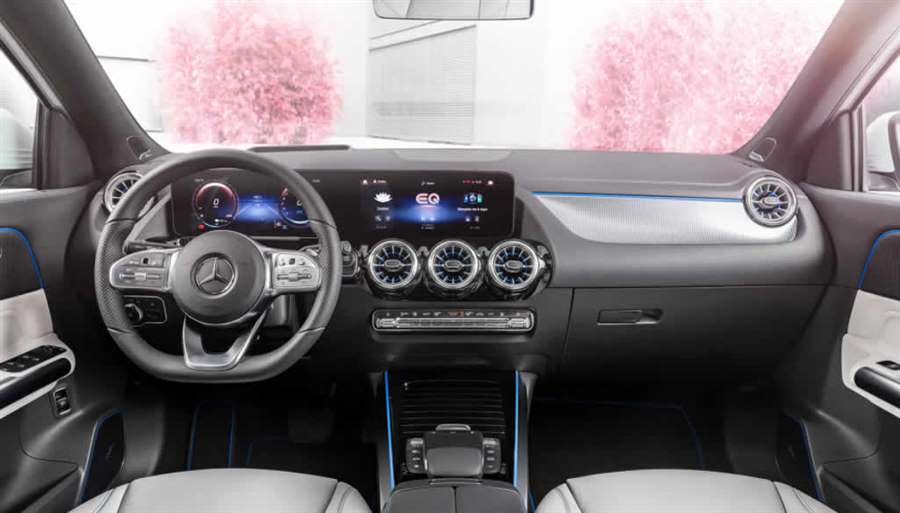
Design wise, it’s what you’ve come to expect from a small Mercedes-Benz SUV – smooth, creaseless design outside and an MBUX-equipped dashboard and infotainment system on the inside.
What's it like inside?
So it looks familiar inside, but there are some interesting touches, such as the instrument lighting which turns momentarily white when boost is active and the horizontally split performance meter which replaces the rev counter. There's also a fire red low-range warning scenario for the screen and the four driving modes are named Modern Classic, Sport, Progressive and Reduced.
The EQA can be had with the Energizing Comfort Plus package first launched in the CLS, which sounds like the answer to a question no one asked, but actually enhances comfort on long drives by offering massage functions, smartwatch connectivity, mood lighting, bespoke music and even a power nap feature you can use when parked up.
UK specs are yet to be confirmed, but trim levels in Europe include AMG Line, an Electric Art version with low-drag aerodynamic wheel covers and the launch Edition 1 featuring rose gold accents inside and out.
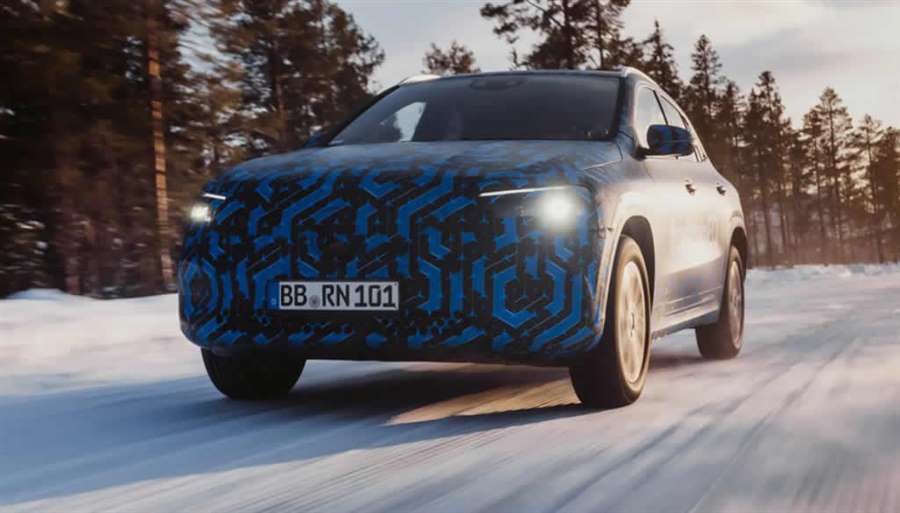
What's under the skin?
The good news is that there's some genuinely innovative technology under the skin and the claimed battery range and performance are impressive. A substantial lithium-ion battery pack is fixed into the floor, with the first model – EQA 250 – having a usable battery capacity of 66.5kWh. That lags behind the 78kWh you get in a Volvo XC40 Recharge, but is on the money for an EV of this size and class.
It's calibrated for range and efficiency rather than performance. The EQA 250 model claims up to 266 miles of range, according to WLTP figures, has a 0-62mph time of 8.9 seconds and a maximum speed of 99mph. You can charge it up to 11kW on AC at home, or up to 100kW on DC rapid charge.
There will be more EQAs to choose from, with Mercedes-Benz confirming that the EQA 250 model will be fjoined by power variants, including those with all-wheel drive. There will also be a 200kW (272hp) version later on (most likely badged EQA 300), and another variant that can claim up to 310 miles.
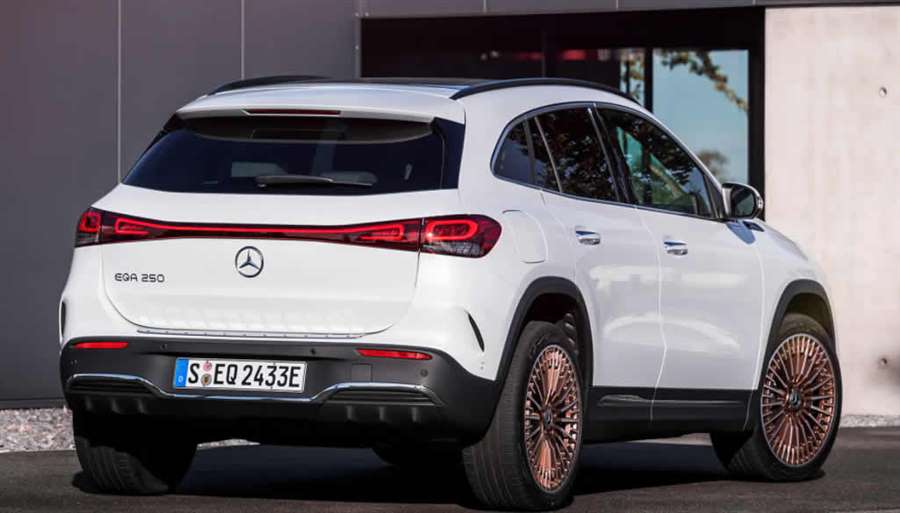
The EQA also gains the EQC's Eco Assist system, which uses navigation and traffic sign data to gauge how much brake regeneration is required at a given moment, and the navigation also takes into account charging times to give you as accurate a time as possible to get to your destination.
What's it like to drive?
We've had a quick drive of a pre-production EQA in prototype form, and can confirm that it's an impressively refined place in which to spend time. The main audio source up to 20mph is the pedestrian warning chime which, later turns into a subdued hum. Only when driving really hard does that murmur swells to a discreet growl.
Despite the modest claimed acceleration figures, keen drivers will enjoy way the EQA can cover ground with surprising vigour. And like all EVs, this seamless acceleration is uninterrupted by gearchange upshifts. The almost noiseless flow means you have little sensation of speed, which might be worth noting if you're not someone who watches the speedo like a hawk. Overall, it’s a refined machine, complete with a comfortable and cosseting ride.
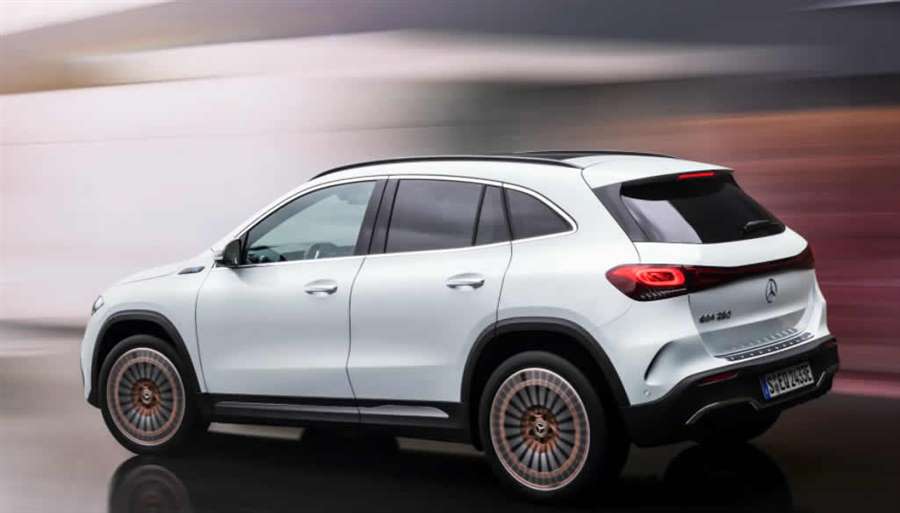
There are three recuperation modes (how much energy is recovered when lifting off the throttle) with different levels of energy regeneration labelled mild, medium and strong. Strong in particular feels like a viable one-pedal driving experience – lift-off and the car quickly loses momentum.
When will it go on sale in the UK?
Expect to see the EQA go on sale in the summer of 2021, with UK prices and specs yet to be confirmed. German prices start at €47,540, which suggest it'll be much more affordable than the XC40 Recharge and BMW iX3. There will be more related models to follow, with the EQB seven-seater SUV and EQS luxury saloon following later in 2021.
Source: parkers.co.uk
New Toyota RAV4 plug-in hybrid 2021 review
The ever-popular Toyota RAV4 SUV gets plug-in hybrid power for first time
From a technological point of view, the RAV4 Plug-in Hybrid is an impressive achievement. This is a comfortable and refined plug-in hybrid SUV – as long as you keep charging it from the plug instead of via the engine. There’s acres of space in the well stocked and well finished cabin, and the boot is still huge. The price tag is big, too, but the ultra-low Benefit-in-Kind taxation rates mean that Toyota could be on to a winner with company car buyers. The Suzuki Across – which is almost identical – is cheaper still, though.
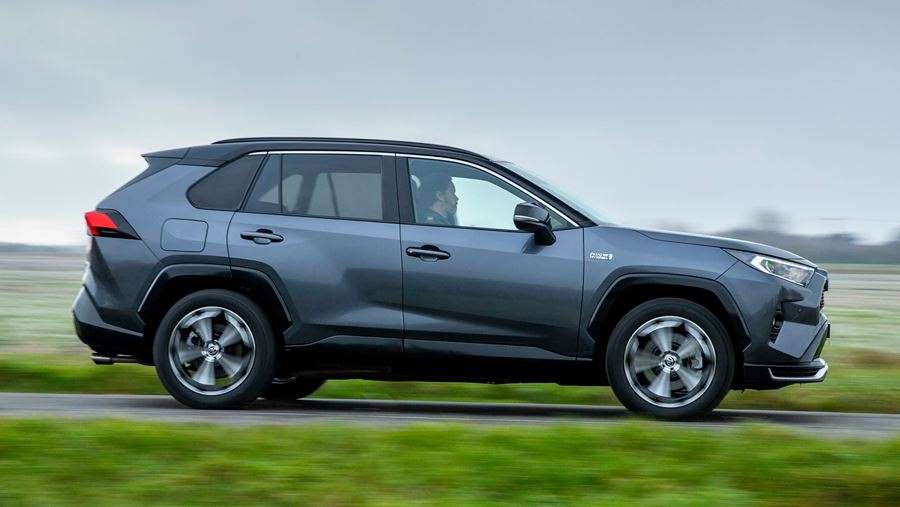
Toyota’s hybrid expertise takes a new turn in 2021 with the introduction of this: the RAV4 Plug-in Hybrid. It’s a bit of a missing link for this popular large SUV. Toyota made a fully electric RAV4 for its first two generations, but for the US market only, while the last version of the car to be replaced had a conventional hybrid powertrain to bring an electrified RAV4 to the masses.
Now, with CO2 targets ever harder to hit, Toyota sees plug-in hybrid power as a catch-all, delivering mass market appeal combined with ultra-low emissions and running costs.
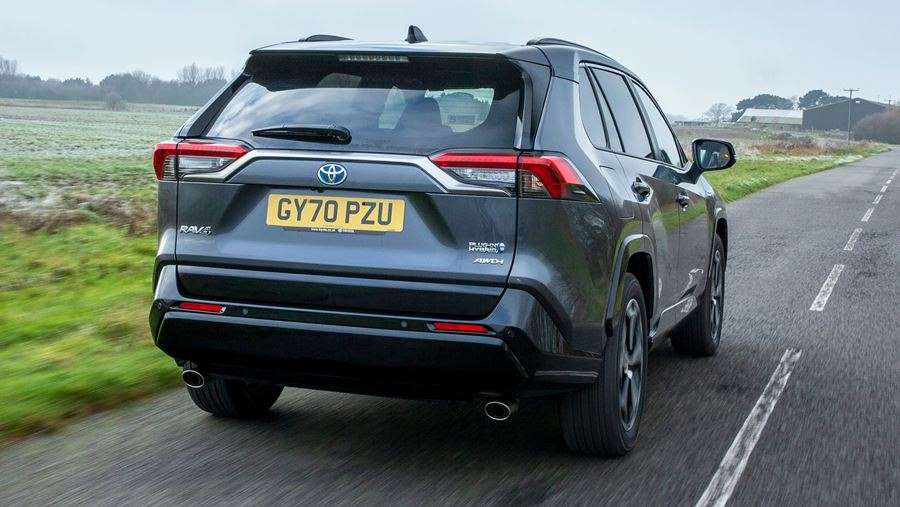
The new car has a 2.5-litre four-cylinder petrol engine developing 182bhp and linked to a CVT transmission, but the battery and dual-electric motor set-up take centre stage. A large 18.1kWh battery is located beneath the rear seats, while the front motor is rated at 134kW (176bhp) and the rear at 40kW (53bhp). The engine and electric motors don’t produce maximum output at the same time, so peak power is rated at 302bhp.
With two electrified axles, the RAV4 drives through its electric motors nearly all the time. The engine is there mainly for generating charge, and only occasionally sends drive directly to the front wheels. The driver can flick through four modes – EV for pure electric running, EV/HV, which shuffles between fully electric and hybrid power automatically, HV for solely hybrid running, and a charging mode, which sees the engine top up the battery on the move.
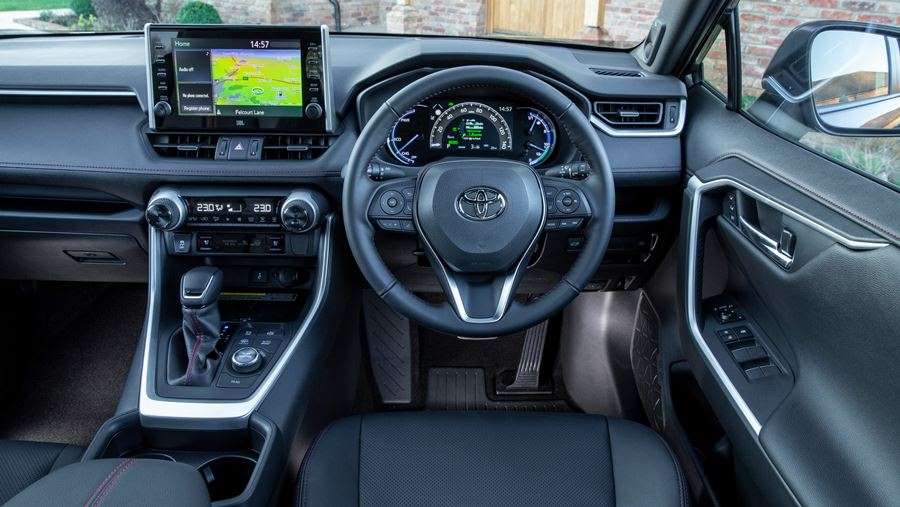
From start-up, the RAV4 defaults to EV mode if there is enough charge in the battery. Keep the cell topped up – it can be recharged in 7.5 hours from a household plug or as little as 2.5 hours from a 7kW wallbox – and there’s plenty of all-electric range to lean on.
EV mode really means just that, and little will provoke the engine into action. Toyota claims up to 46 miles of pure-electric running is possible, and we managed 35 silent miles with no real effort. The car is extremely smooth, and on electric power alone it’s certainly fast enough for day-to-day life. Its acceleration is comparable with that of the entry-level 2.0-litre petrol RAV4. The top speed on electric power is 84mph.
When the battery is drained, the RAV4 automatically switches into EV/HV mode, but you’ll still wonder if the engine is involved. The transition between the two power sources is seamless, and even having a CVT transmission doesn’t seem to be a problem. The engine drops in and out, contributing when it needs to and quietly leaving when not required. It’s a very impressive piece of engineering.
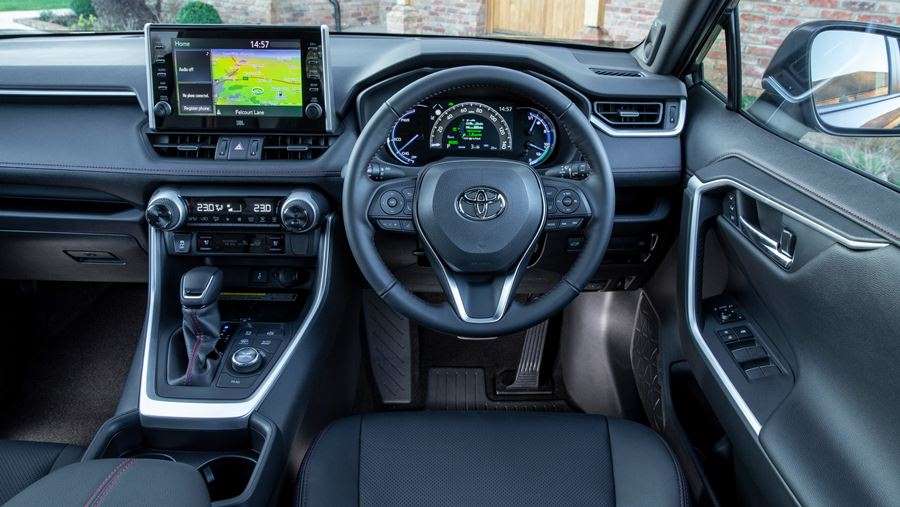
You’ll also discover Eco and Sport modes on top of the drivetrain options. They alter the state of performance, with Eco mode dulling throttle responses in the pursuit of efficiency, and Sport mode giving you maximum power in one hit.
Although 0-62mph takes just six seconds, the RAV4 is not a car you’ll want to hurry in. Instead it’s a solid cross-country cruiser, with good ride quality at speed. The weight and firm springing mean it’s slightly fussy at low speed around town, though, and not quite as comfortable as the other RAV4 variants. It’s got nice steering, great visibility and loads of space for adults front and rear. But Toyota’s newcomer is heavy and it feels it, so while 302bhp sounds like a recipe for fun, it’s best to sit back and enjoy the impressive levels of refinement.
The only flaw in this otherwise spookily smooth and silent package is exposed when you tap into the recharge mode. Asking the engine to constantly top up the battery introduces trademark CVT wailing. Up hills the revs are intrusive and coarse, but it’s a small trade-off to pay when you consider the rest of the package.
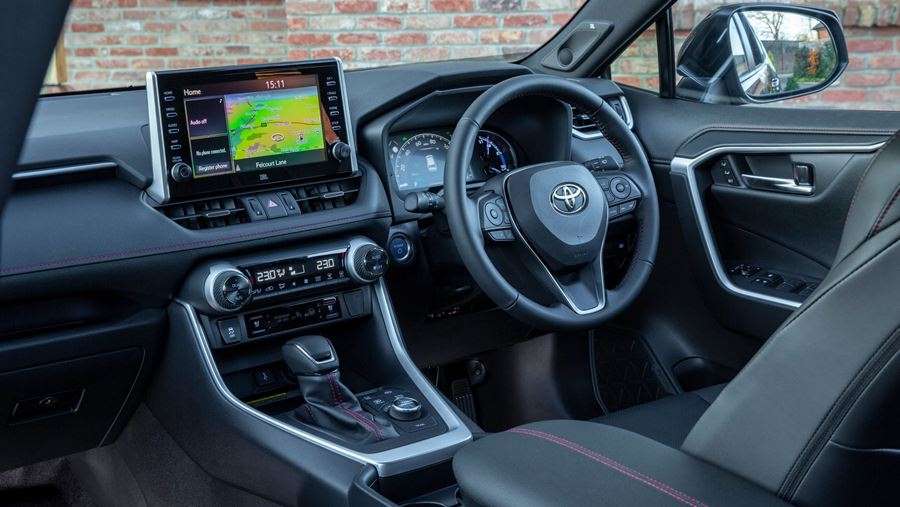
Toyota claims fuel economy of 282.5mpg. That’s a rather fanciful figure, but you can expect around 55-60mpg in the real world, or more if you do as you should, and plug in on a daily basis. CO2 emissions of just 22g/km mean company car users profit the most from the RAV4’s tiny Benefit-in-Kind tax rate of just seven per cent for the 21/22 tax year. Those in the 40 per cent bracket can expect a tax bill next year of around £1,424, so compared with standout rivals, the Toyota’s financials make strong sense.
The only problem nipping at its heels is the near-identical Suzuki Across PHEV, which, thanks to its slightly smaller price tag, has a slightly smaller tax bill, too – £1,275 for 21/22 for higher-rate taxpayers. However, we found the Suzuki wasn’t quite as comfortable on the road as the Toyota.
Prices for the RAV4 PHEV start from £47,395 in Dynamic trim, rising to £50,895 for this Dynamic Premium car. That’s quite a chunk, and compared with rivals such as the Peugeot 3008 HYBRID4, the RAV4 is a pricey option with its large battery.
But this trim does bring a panoramic roof, black leather upholstery, and heated and cooled electrically adjustable seats. Even heated rear seats are standard. It feels plush and very well made, if lacking a little sparkle in its design. The only real weak point is the nine-inch infotainment, with its cheap-feeling buttons and dated graphics. Yet standard Apple CarPlay and Android Auto allow you to bypass this using a smartphone.
Source: autoexpress.co.uk
2021 Audi SQ5 First Test Review: “S” Is for “Sporty” and “Suave”
Comfortable when you need it, punchy when you want it.
With SUVs being so popular now, manufacturers have the challenge of fitting multiple models into a multitude of niches to satisfy all kinds of customers. Take Audi, for example, whose Q5 represents about 25 percent of the marque's U.S. sales. Part of that has to do with the model's three very different powertrain variants: the regular Q5 45 TFSI, the gasoline-electric plug-in hybrid Q5 55 TFSI e, and the dynamic SQ5. In the hottest segment of the game, you gotta satisfy everyone.
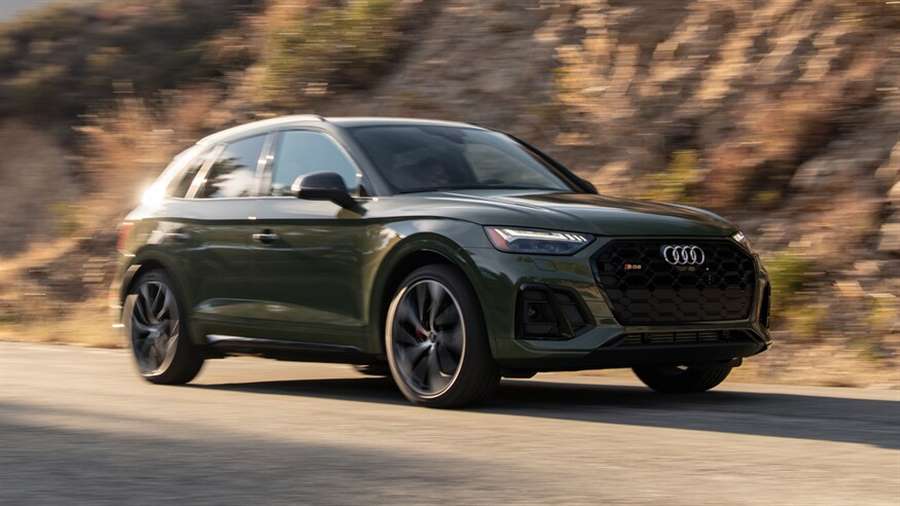
The 2021 Audi Q5 lineup gets a midcycle refresh that slightly changes its appearance inside and out, not to mention slightly boosts the model's performance. The 2021 SQ5, which we'll focus on in this review, improves upon the 2020 model, and after taking it to the track, we can confirm it also handles like a champ on our figure-eight course.
2021 Audi SQ5: The Numbers
In our testing, the turbocharged 3.0-liter V-6 that puts down 349 hp and 369 lb-ft of torque launched the SQ5 from 0 to 60 mph in 4.7 seconds, exactly the same time Audi got with its own stopwatches. The SQ5 also completed the quarter mile in 13.4 seconds at 102.9 mph. Those are pretty good numbers for a 4,400-pound SUV and it means the SQ5 can stay neck and neck with the competition. The last Mercedes-AMG GLC43 we tested—a 2017 model—got to 60 mph in the same 4.7 seconds and crossed the quarter mile in 13.4 seconds at 104.3 mph. Talk about being competitive. Since then, however, Mercedes has added 23 horses to the GLC43, which now makes 385 hp (torque remains the same at 384 lb-ft). We have yet to test an updated GLC43, so we'll have to wait and see how much faster (if any) it is.
Road test editor Chris Walton was impressed by the SQ5's handling. "Wow! What a delight on the figure eight," he said. "Really, a tremendously fun experience that I was not anticipating. Porsche levels of fun and predictability."
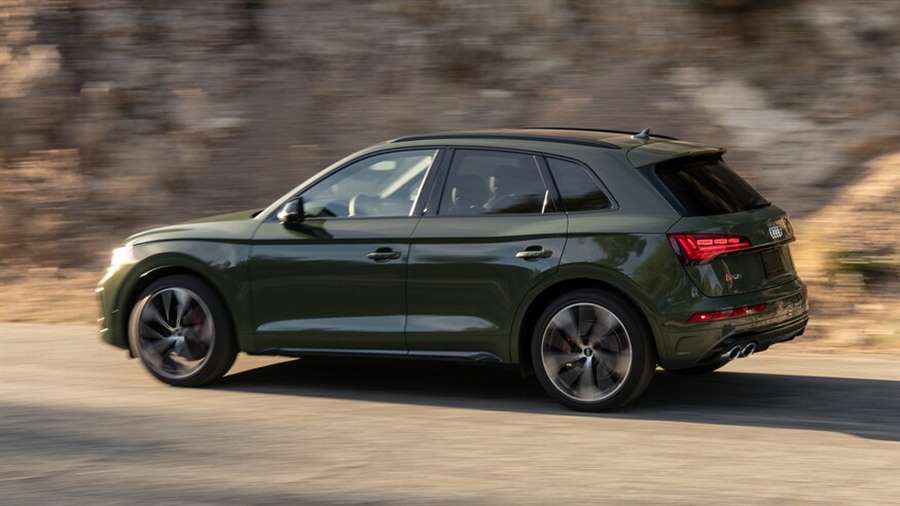
Whether it's on the track or the streets, the 2021 Audi SQ5 is fun to drive. Like we said in our First Drive, the SQ5 feels more like a hot hatch than a hot SUV, with limited body roll and sharp steering response. On twisty roads, the SQ5 leans in nicely, its tires maintaining good grip and giving you the confidence to push the SUV even harder. The low-end torque allows the SQ5 to pull itself out of corners with ease, but the transmission takes a bit of time to downshift, even in Dynamic mode. At least Audi fits the SQ5 with shift paddles, which allow the driver to override the gearbox's lethargic nature.
You're most likely buying an SQ5 because you want more power, but when you want to cruise peacefully, this Audi also delivers. Despite its 21-inch wheels, the SQ5's ride is settled and peaceful on the freeway. When we drove about Portuguese Bend, an area of the Palos Verdes Peninsula in Southern California where frequent land movements perpetually rumple the pavement, we noted the Audi's suspension handled medium undulations well.
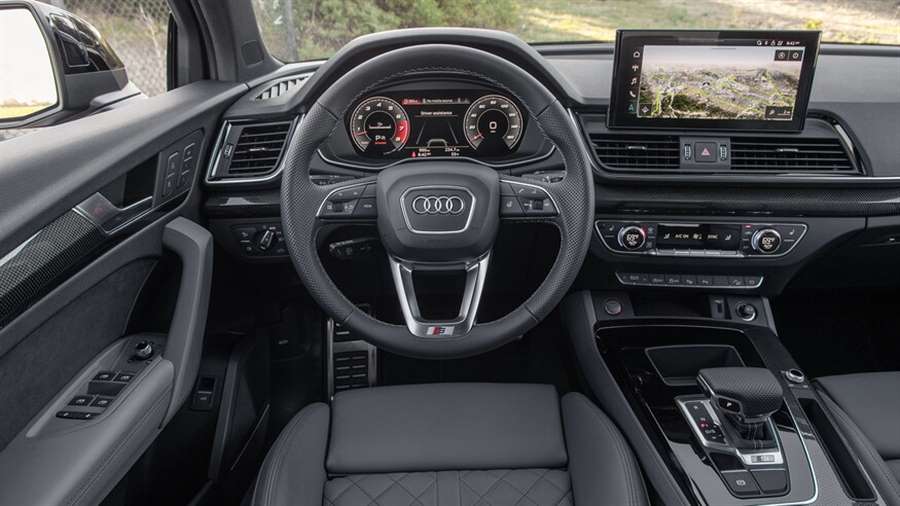
2021 Audi SQ5: Inside The Beast
You'll know you're in the SQ5 thanks to the number of badges located about the cabin. From the steering wheel to the shifter to the seats, the abundant S logos visually differentiate the SQ5 from its less powerful siblings. Besides that, all Q5 and SQ5 models come with the same 10.1-inch touchscreen infotainment system that's compatible with wireless Apple CarPlay and Android Auto. This screen replaces the priorly available 7.0- and 8.3-inch displays and is located within easy reach of the driver. The MIB3 infotainment system is easy to use and fast to respond, and it now adds a voice control system that learns and recognizes natural commands for vehicle controls.
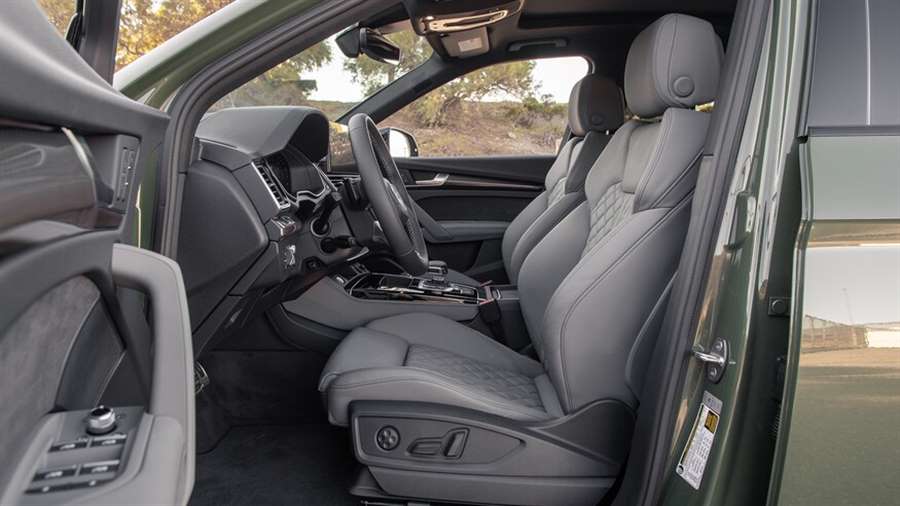
Although the SQ5 (as well as its Q5 stablemates) doesn't get the fancy dual-screen center console found in Audi's bigger models, such as the Q7 and Q8, the cabin still feels tech-savvy. A 12.3-inch digital gauge cluster (or Virtual Cockpit in Audi-speak) is enhanced with a better resolution that makes the setup's Google Satellite images even crisper. Our test car included the Prestige package and came with the optional color head-up display. The 19-speaker Bang & Olufsen premium sound system had us cranking up the volume every time we played our favorite songs.
Interior space is generally decent. The biggest compromise is to second-row foot room due to the bulky drivetrain hump. Other than that, though, there's plenty of space for adults. Rear-seat passengers will appreciate the airy cabin thanks to the large windows, but the biggest downside is that the seats do not fold in a fully flat position.
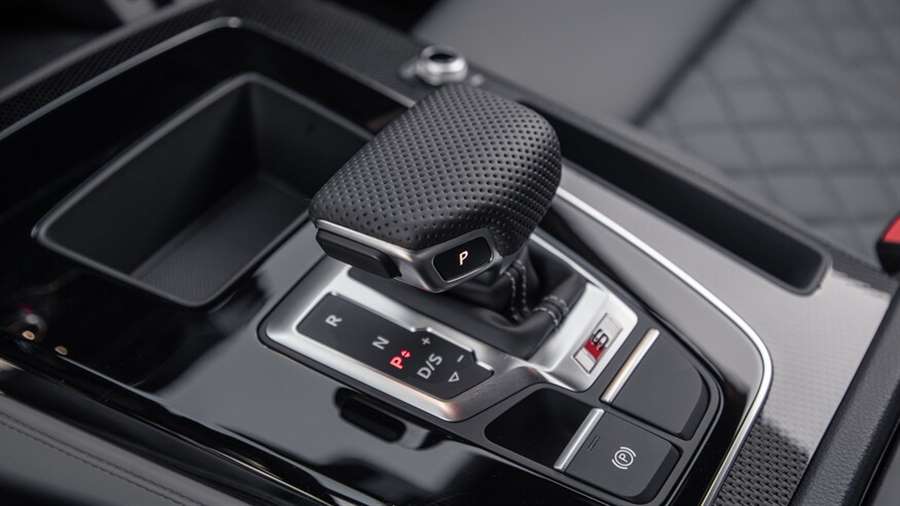
2021 Audi SQ5: Worth The Cost?
The updated SQ5 brings a fresh design inside and out while balancing dynamics and refinement for everyday driving. It's a great option for those who want more punch than the Q5 offers. Plus, with a starting price of $53,995, it's a reasonable value—at least in its base form. Prices escalate quickly, though, with our top-of-the-line SQ5 with the Prestige package stickering for $71,790.
The SQ5's number one mission is delivering a fun driving experience. This Audi not only does that, but it also provides a suave ride when you want it. Few SUVs manage to do this as well as the SQ5 does.
Source: motortrend.com
Soon and Hyundai Bayon
Hyundai Motor has announced a new announcement of the image of its new crossover Baion. It is coming to the European market in the first half of 2021, which is an important addition to the current line of Hyundai SUVs.
With the launch of the new, additional B-segment model as an entry point into its SUV line, Hyundai sees a great opportunity to better meet the demand of European customers and increase supply in the very popular segment.
The name Baion is inspired by the city of Baion in southwestern France. Since the Hyundai Bayon is primarily a European product, Hyundai decided to name it after a European city. Located between the Atlantic coast and the Pyrenees, the French city is a great location for those who enjoy activities such as sailing and hiking, fitting into the life character of the new model.
More details about the Hyundai Bayon will be revealed soon, but it is expected to use the same platform as the new i20.
Among other things, the offer should include a 1.0-liter three-cylinder turbo gasoline engine with 120 hp.
Customers will be offered a choice between manual and automatic transmissions, and the equipment will also include a digital instrument panel and a 10.25-inch infotainment system screen.
What Will the 2023 Toyota 4Runner Have to Offer?
Since 1984, the Toyota 4Runner has made its mark in our lineup as a powerhouse SUV. It’s getting close to having a cult following because of its versatility with its on and off-road capabilities. This is what makes it a great option for any driver, not just those that like to take their adventure off the pavement. Anyhow, at Toyota of N Charlotte, it’s safe to say we’re BIG fans of the Toyota 4Runner, and we’re eager to announce that the ever popular SUV will be redesigned in 2023. Take a look at the details on what to expect from this new Toyota.
What Will the New Toyota 4Runner Bring to the Table?
The current N Charlotte Toyota 4Runner model has a 4.0L V6 engine with Dual Independent Valve Timing. Rumor has it that the 2023 model will offer more than just one engine option. Even though many fans are into the current configuration, adding a couple of options can increase the horsepower, torque, fuel efficiency, and overall create a more versatile SUV than what it already is! A turbocharged option could also be in the works—this will definitely bring an amazing drive time.
It’s possible that a hybrid option for the new Toyota 4Runner model will be in the works as well. As a company committed to going green, mixing this with a popular N Charlotte model is just the right move for the company. Not only does a hybrid model offer better fuel efficiency, it also offers an eco-friendly performance with fewer emissions.
As for looks, the current N Charlotte Toyota 4Runner has a muscular design along with defined lines and features that are out of this world. For a new Toyota 4Runner redesign, the anticipation is getting fans anxious because they know that when Toyota redesigns a model, it’s a drastic change. Our guess is that parts like the back end, front grille, lighting schemes, etc., will see changes. Other accessories like tow kits and roof baskets could even become standard. Thus, there’s reason to believe that the 2023 model will look different.
If an exterior overhaul is added, then changes in the interior would also be necessary. We predict new options are coming in for interior trim materials and fabrics, as well as more space with better distribution. Infotainment, safety, efficiency, and convenience features are predicted to be be added for a better drive time!
Test Drive the N Charlotte Toyota 4Runner Today!
We’ve obviously been very eager for the arrival of the 2023 Toyota 4Runner, but for now were going to in the moment and appreciate the current model of the 4Runner. Test drive the 2021 4Runner or any other new Toyota on our lot. You can get the feel of driving on of our renowned new Toyotas. Make your way to Toyota of N Charlotte today! We’re located at 13429 Statesville Rd just off I-77 at exit 23 in Huntersville. You can also call us to schedule an appointment at (704)875-9199.
Source: toyotaofnorthcharlotte.com
New Audi Q5 40 TDI 2021 review
The revised Audi Q5 40 TDI SUV delivers plenty of tech and surprising value
Verdict
The revised Audi Q5 offers useful updates when it comes to efficiency, performance and on-board technology. It still looks stylish inside and out, it’s well built and although it’s a bit dull to drive, it’s comfortable, refined and practical. The real surprise here in the most basic Sport trim is that it delivers impressive value for money, with a generous amount of standard kit.
Think premium SUV, and the chances are that you’ll think of the Audi Q5. From the way it drives to the way it’s built and how it looks, the Q5 has always been a solid choice. But the pace of development in this class is fast, so there’s a new version of the German firm’s mid-size SUV.
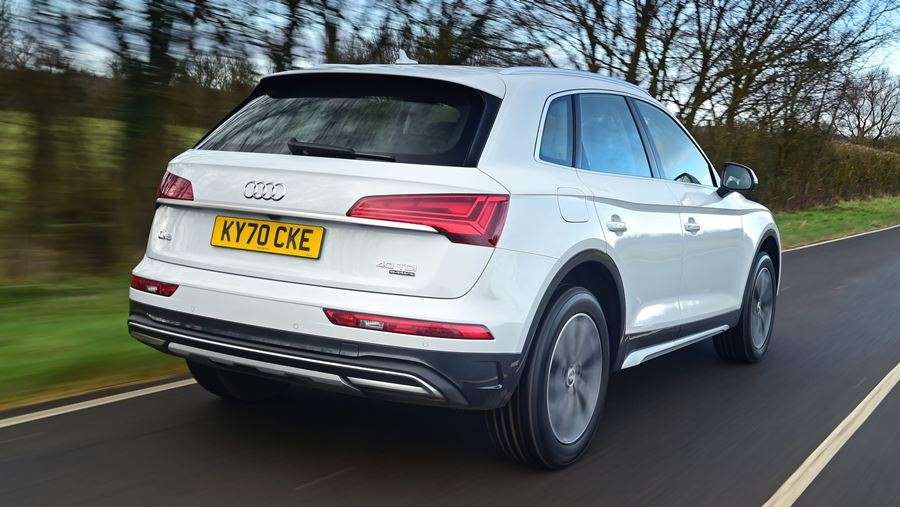
The updates focus heavily on technology to keep pace with newer models in the class, as well as revisions to the 40 TDI diesel model we’re testing here, making it cleaner and more powerful, thanks in part to mild-hybrid electrification.
The level of standard kit has taken a step forward as well, so even this entry-level Sport model could offer everything you’ll realistically need, even if on its standard 18-inch wheels it doesn’t look quite as sharp or as aggressive as the sportier S line trim that sits above it. Sport still receives new LED headlights and the same overall visual updates, with a larger, more pronounced grille that features some silver vertical bars to help it stand out. There’s a different design for the front bumper, too, while at the rear the changes are less significant. It’s a subtle but effective facelift overall.
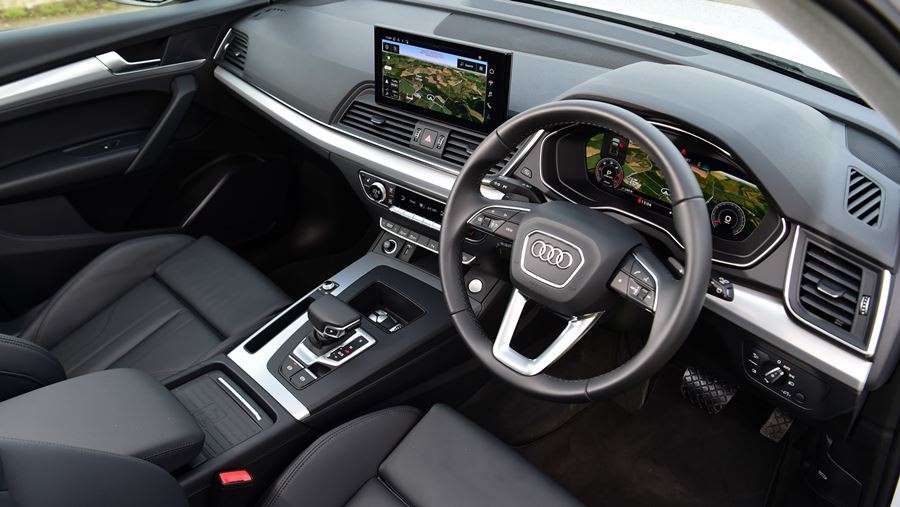
The SUV has also received the same treatment inside as its A4 and A5 siblings, with a new 10.1-inch central touchscreen as part of the MMI Nav Plus system that replaces the older scroll wheel on the transmission tunnel. There’s now a slightly awkward, rather shallow storage tray in its place, but build and material quality is still as good as you’d expect from an Audi, while the updated tech is sound. It works with the level of speed and response to your inputs you’d expect from a premium model, while there are lots of features, too.
There’s no real reason not to get on with the native system because the menus are fairly logical and easy to navigate, plus the graphics are great and the screen is well positioned in your eyeline (if maybe just a tiny bit too far away from the driver). But Apple CarPlay and Android Auto are also fitted as standard, so you can plug in your smartphone instead if you want.
On top of this you also get heated sports seats in Audi’s twin leather upholstery, three-zone climate control, cruise control, front and rear parking sensors with a reversing camera, and autonomous emergency braking with collision warning and pedestrian detection.
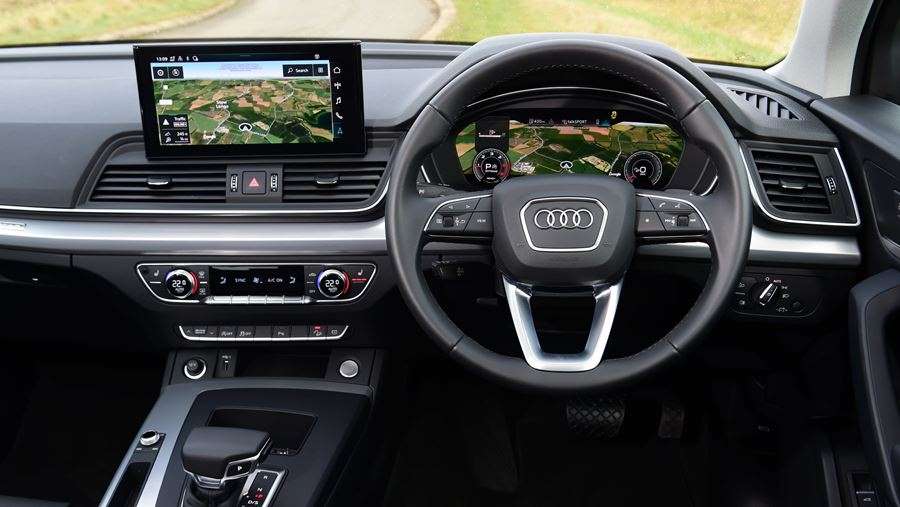
The Q5 inherits its predecessor’s full five-star Euro NCAP crash safety rating, which is an important feature for a family SUV like this.
Practicality is also key, and with a 550-litre boot – expanding to 1,520 litres with the useful 40:20:40 split rear seat bench folded down – there’s plenty of luggage room in the Audi. You even get a powered tailgate as standard to boost the level of flexibility on offer.
It’s not the biggest load bay in its class, but the Q5’s boot is far from cramped, and the same goes for the interior. You sit up high, as you’d expect in an SUV, and that’s possible because the seat base isn’t the longest, which brings your legs closer back towards you with a greater bend in your knees. But the Q5 offers plenty of legroom and doesn’t struggle for headroom either.
Practicality is pretty much unchanged then, and it’s a similar story when it comes to how the Q5 drives. That’s because it’s still based on the VW Group’s MLB Evo platform, with multi-link suspension all round.
Nestled under the bonnet of our test car is Audi’s updated 2.0-litre 40 TDI diesel, which produces 201bhp and a respectable 400Nm of torque. That’s 14bhp up on its predecessor thanks, in part, to the addition of a new 12-volt mild-hybrid system, which sees a belt-driven starter-generator (BSG) deliver a small hit of power and torque to assist when pulling away.
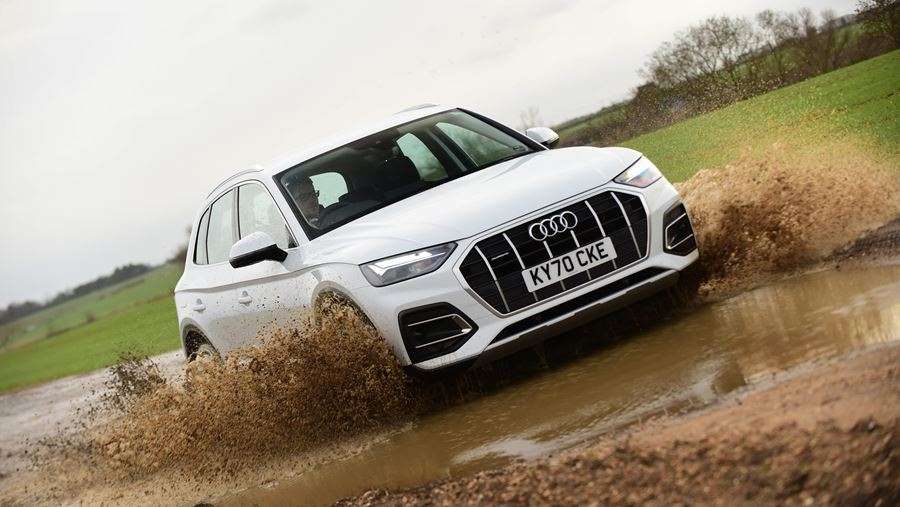
However, the mild-hybrid system has had a bigger impact on efficiency. The BSG charges a small lithium-ion battery when slowing down, which can be used to power ancillaries such as the climate control and electric power steering. In addition, the 2.0 TDI unit can cut out and coast at speeds of up to 99mph when you’re in the right driving mode, while the stop-start system activates below 13mph. It also makes things smoother when the engine does restart.
Claimed economy stands at 44.8mpg with 165g/km CO2 emissions, but while Audi is doing its best to make diesel less of a dirty word, it still feels like that in the current climate, the plug-in hybrid TFSI e will be a better bet for drivers seeking big efficiency and lower running costs.
Performance is strong, though, with some weight saving on engine components and the extra grunt delivering a 7.6-second 0-62mph time. In reality, nobody ever stretches their car’s performance to this degree all that regularly, but in conjunction with the seven-speed dual-clutch S tronic gearbox, the 400Nm of torque means it doesn’t kick down too many gears all that often when you want a more than moderate burst of acceleration.
Even if it does, the changes are pretty smooth – not whip-crack fast but well slurred to keep things relaxed – and the TDI unit’s sound is suppressed well enough that while it’s audible, it’s far from intrusive.
There’s little road noise too, helped by this car’s smaller wheels. They do look a little lost next to the big body, but they also improve the car’s ride quality.
The Q5 isn’t quite the most comfortable car in this class, but it rolls over ripples and imperfections in the road surface without too much fuss or transmitting a great level of shock or body movement, so it’s a smooth cruiser.
It isn’t the most dynamic option, though. The steering isn’t quite as direct as we’d like, even for an SUV (those big tyre sidewalls probably don’t help matters), while there’s some roll. But the Q5 is dynamically tidy enough to suffice; it’s comfort that matters more in a car like this, which it delivers, but the Audi is a bit dull when it comes to any sense of engagement.
Source: autoexpress.co.uk
Mercedes GLC SUV review
“The Mercedes GLC is an SUV that benefits from a lot of C-Class pedigree, but with a raised ride height and improved practicality”
Mercedes has had a car battling against the BMW X3 and Audi Q5 since 2009, but to UK buyers this may not have been obvious because the old GLK-Class was only sold in left-hand-drive markets. However, since 2015, the GLC, which replaced the GLK, has been sold here and is an SUV version of the popular Mercedes C-Class saloon on which it’s based.
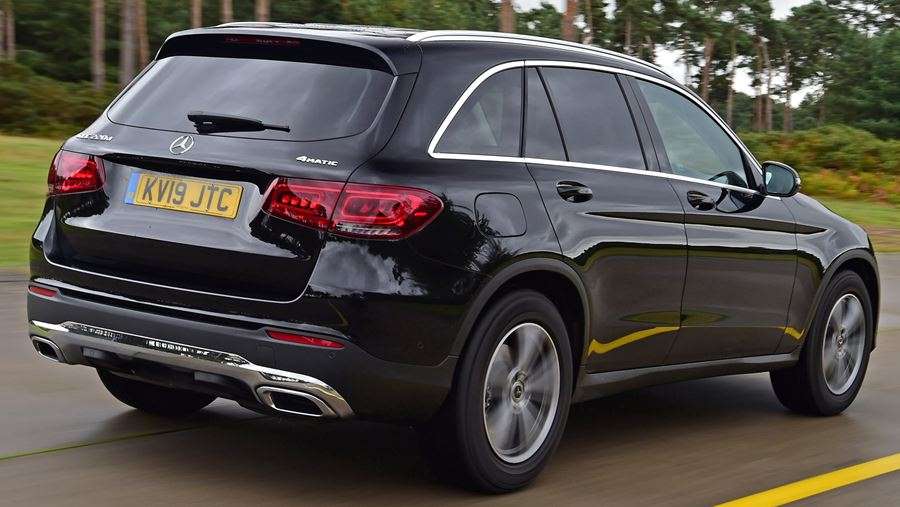
Mercedes gave the GLC a mild facelift in 2019, which involved some tweaks to the exterior design, some new engines and a plethora of technology upgrades inside. The updates were needed given how competitive the SUV market had become, and 2021 ushers in a plug-in hybrid version for the first time too.
Best 4x4s and SUVs
The revised GLC borrows engines and equipment from the C-Class. The similarities between the two models are harder to spot in style terms, however, unlike the Mercedes A-Class and GLA, which have more in common. The GLC is an attractive car in its own right, with the latest design including slimmer headlights and tail lights, and the latest Mercedes grille.
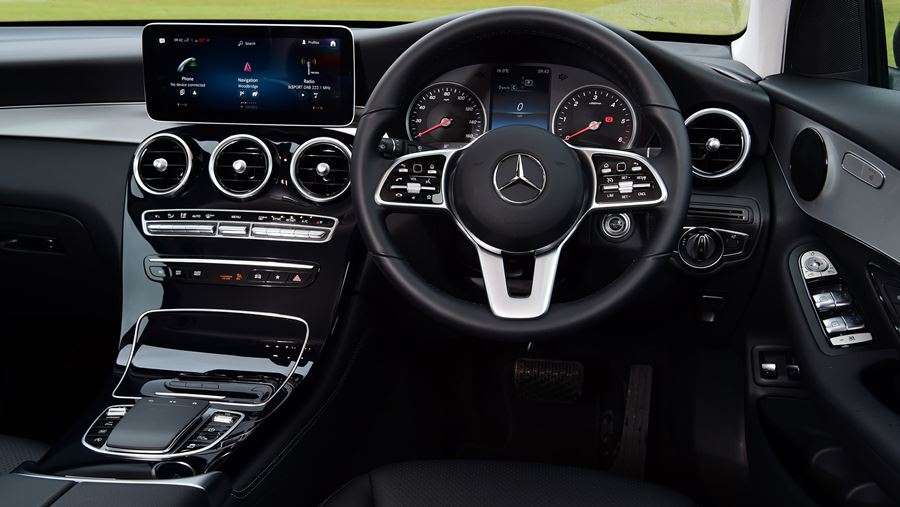
Every GLC comes with Mercedes' 4MATIC four-wheel drive and a smooth nine-speed automatic gearbox as standard. Versions badged 220 d and 300 d are fitted with the same 2.0-litre diesel, but tuned differently to produce 191 and 242bhp respectively. The 220d returns up to 45.6mpg and has CO2 emissions starting at 175g/km, while you can expect 42.8mpg and 184g/km from the 300 d, which are competitive figures. These are trumped by the GLC 300 e plug-in hybrid model, which can manage 26-31 miles of electric range and 122mpg. What’s more, its low CO2 emissions mean company-car tax is a third of the petrol and diesel engines.
A clear highlight of the GLC is its attractive and well built interior, which also has enough room for front and rear occupants to be comfortable, along with heater controls for people sitting in the back, which is surprisingly rare. There are lots of thoughtful cubbies and the 550-litre boot puts the GLC in the same territory as the X3 and Q5, while the Discovery Sport is more practical and has the option of seven seats.
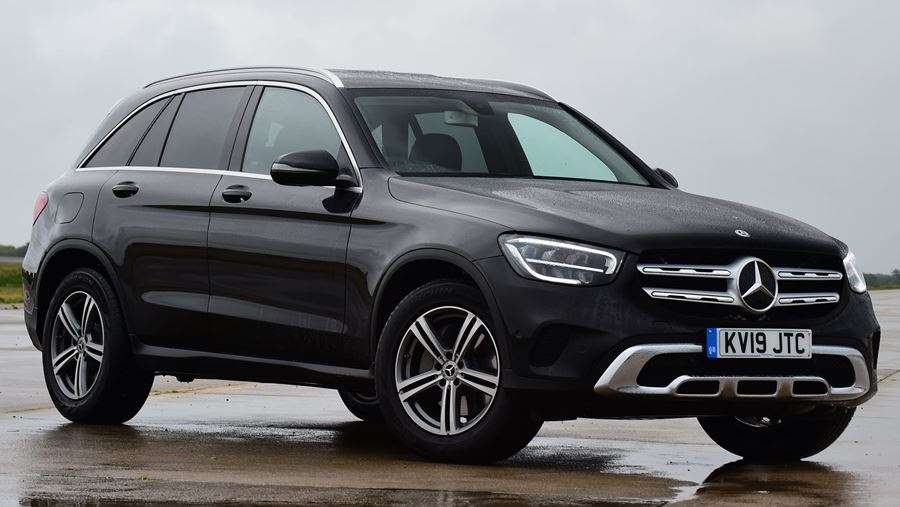
The introduced the latest Mercedes MBUX infotainment system, but unlike all-new models, there's still a tablet-style central screen perched on the dash, that looks slightly incongruous. The software is a major upgrade, though, and the main screen now responds to touch as well as the central control pad. A regular set of dials are standard, while a large 12.3-inch digital version is available as an option.
On the road, it soon becomes apparent that Mercedes concentrated on comfort when developing the GLC. It’s very smooth on the standard suspension and even more cosseting if the optional air-suspension is fitted. Drivers on the hunt for thrills may feel short-changed, though – while the Volvo XC60 is even softer, the newer BMW X3 is more responsive and poised on a country road.
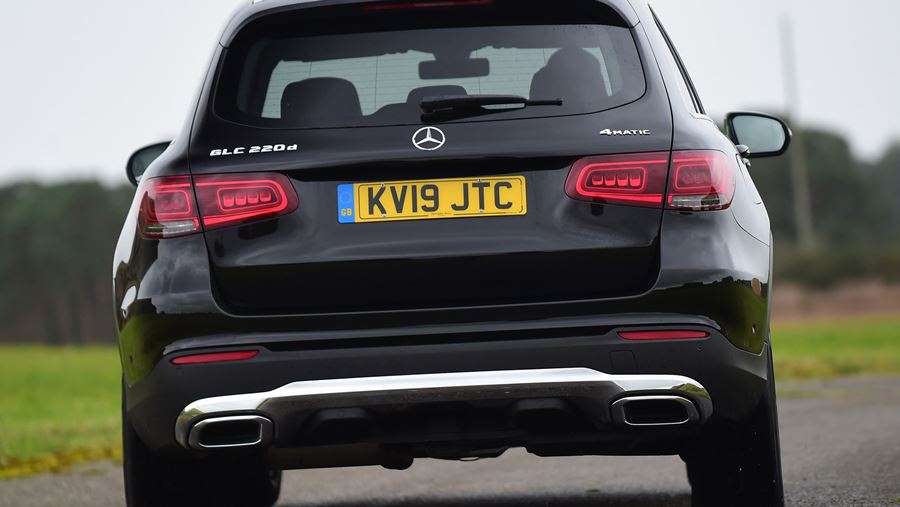
There are effectively three trim levels, consisting of the core AMG Line trim, plus Premium and Premium Plus versions. The 220 d engine is only available in AMG Line Premium and below; the more powerful 300 d is the AMG Line Premium and up. Desirable items like a powered tailgate, reversing camera and Artico leather upholstery are all included, along with sat nav and LED headlights. AMG Line Premium GLCs gain distinctive body styling and an interior makeover, as well as even bigger 20-inch alloy wheels.
AMG Line is now the most appealing trim for company-car drivers and we'd recommend spending the extra monthly finance cost for private buyers too, to benefit from all the GLC has to offer. The Premium equipment line includes adaptive headlights, running boards, a larger instrument display, ambient lighting, augmented reality navigation, Android Auto and Apple CarPlay compatibility and wireless smartphone charging.
Before it was facelifted, the GLC came 61st out of 100 models in our 2019 Driver Power customer satisfaction survey, but reliability wasn't a strong point, so owners will be hoping issues have been remedied. Further peace of mind should be provided by the GLC’s five-star Euro NCAP crash-test rating.
Mercedes GLC SUV - MPG, running costs & CO2
The Mercedes GLC is actually quite economical given its size
SPECIFICATIONS
The Mercedes GLC is pretty economical for an SUV, with its claimed figures rivalling the likes of the Audi Q5 and BMW X3. Mercedes also offers competitive warranty and servicing plans.
Mercedes GLC MPG & CO2
The 220 d version of the 2.0-litre diesel engine can return up to 45.6mpg, reducing slightly in top trims with optional wheels fitted. CO2 emissions of 175g/km mean it sits in the highest BiK band, which won’t appeal to company-car drivers. The more powerful GLC 300d is a shade less economical, at up to 42.8mpg, with emissions of 184g/km. By comparison, the BMW X3 xDrive 30d offers more pace and returns 46.3mpg with 159g/km.
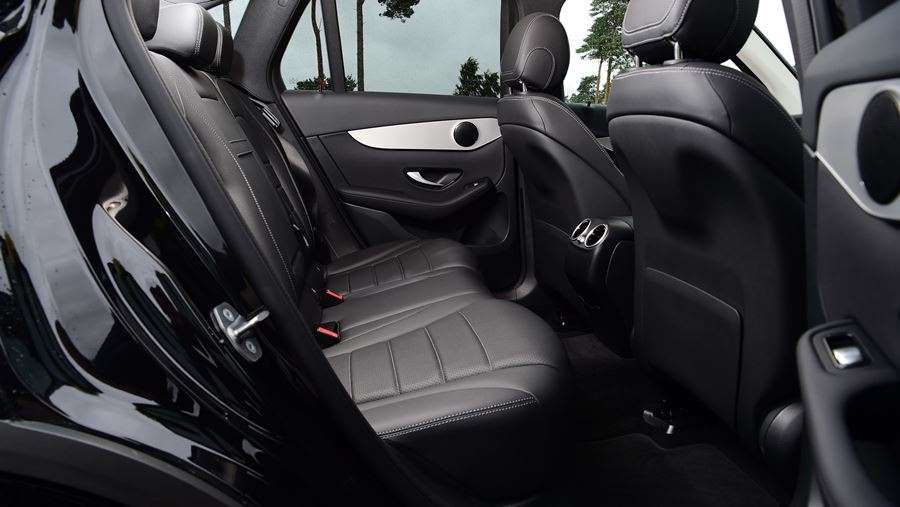
Petrol engines are offered too. A GLC 300 model promises up to 33.6mpg, while the AMG 43 and 63 models above are even thirstier. They certainly prioritise speed over running costs; you can expect 26 and 22mpg respectively. All petrols are in the top BiK band.
A plug-in hybrid GLC 300 de version is now available, pairing the 2.0-litre diesel engine with a 13.5kWh battery. It offers 27 miles of electric range and up to 156.9mpg if you regularly recharge the battery, while business users will be drawn to its 12-13% BiK rate. It’s also exempt from the London Congestion Charge until October 2021. In 2021 it was joined by the GLC 300 e, with a petrol 2.0-litre engine and an electric range of 26-31 miles. It can officially manage up to 128.4mpg with emissions of 62g/km and it takes around 2.5 hours to charge the battery using a 7kW home wallbox.
After the first year's CO2-based road tax (generally included in the on-the-road price), Mercedes GLCs cost £150 a year to tax, or £10 less if it's a hybrid. Every GLC now has a list price (including options) of more than £40,000, making it liable for an additional surcharge of £325 a year in years two to six, bringing the annual bill to £475 during that period.
Insurance
Insurance groups for the facelifted Mercedes GLC are quite high, with diesel versions starting in groups 32 and the GLC 300 de in groups 44-45 out of 50. Oddly, this is just as high as the AMG versions in groups 41-44.
Warranty
Mercedes provides a three-year/unlimited-mileage warranty on all of its new models, which is the same as BMW offers on the X3. Pan-European Mercedes Roadside Assistance is also included, that can last up to 30 years if you keep the car maintained within the dealership network.
Servicing
Mercedes offers fixed-price servicing plans that cover all scheduled maintenance. You can pay all in one go up front or spread the cost over monthly instalments, which should be about £35 for a diesel GLC.
Mercedes GLC SUV - Engines, drive & performance
Its diesel engines are smooth, but the Mercedes GLC is more of a comfortable cruiser than an exciting driver’s car

SPECIFICATIONS
Engine choice is reasonably limited in the Mercedes GLC, but the two diesel options are very smooth on the move. All also come with four-wheel drive as standard – a system Mercedes calls 4MATIC. The GLC is almost car-like to drive and as comfortable and sophisticated as a luxury limousine – a happy consequence of sharing a platform with the C-Class saloon.
The GLC is at its best when driven in a relaxed, unfussed manner than on spirited back-road jaunts. Although all models have clever dampers as standard, they seem optimised for soaking up bumps and improving ride comfort rather than providing sharper responses. For a truly rewarding SUV driving experience, the BMW X3 and Jaguar F-Pace remain the cars to beat, although in the comfort stakes, the Merc trumps the Alfa Romeo Stelvio. The Volvo XC60 is even more comfortable still.
Mercedes GLC SUV nose20
The GLC leans a little during hard cornering, but not so much as to feel unsettling and less than the Audi and Volvo. The steering is accurate enough, yet feels rather light and requires quite large inputs, so there’s little to encourage fast driving anyway. It’s far better to ease off the accelerator and cruise, which the Mercedes does very well.
All models use a smooth, responsive nine-speed automatic gearbox, which does a good job of keeping the engine revs low in the interest of fuel economy. The four-wheel-drive system is permanently engaged and uses traction control to ensure a firm grip on the road – any wheel found to be slipping is lightly braked and the engine's power is sent to the wheel on the opposite side to get you moving again.
Mercedes GLC diesel engines
Many people buying an SUV of this size will choose a diesel, and there are two available, badged 220 d and 300 d. Both are different versions of Mercedes' four-cylinder 2.0-litre engine, which is smoother and quieter than the 2.1-litre diesel it replaces, but still slightly more clattery than the best diesel engines found in rivals.
It might not appear like it if you look at the official performance claims, but most drivers will be satisfied with the slower 220 d, and it suits the GLC well. Mercedes claims 0-62mph times of 7.9 for the 200 d and 6.5 seconds for the 300 d, both of which will be more than fast enough for most SUV owners. That means our top pick is the cheaper 220 d, and it's a shame this isn't available with every trim level. Unlike the coarse old engine, the GLC 300 d we sampled was as smooth and quiet as a petrol, but with even more urge in real-world driving.
Petrol engines
Talking of petrol, the GLC 300 with 254bhp is available, featuring a new turbocharger, engine design and particulate filter all aimed at reducing emissions. It's also fitted with a mild-hybrid system that can recoup energy as the car slows down, then use it to aid acceleration. Acceleration from 0-62mph takes 6.2 seconds, while its top speed is 149mph. AMG models are even faster - the 43 model cracks 0-62mph in under five seconds, and the 63 and 63 S reduce this to four seconds or less. With the speed limiter removed, the GLC 63 S will carry on all the way to 174mph.
Hybrid engine
Most plug-in hybrids use a petrol engine, but the GLC 300 de has a diesel engine for long-range economy. The combination produces 302bhp, so the PHEV is quick too - 0-62mph takes 6.2 seconds. For 2021 the petrol-based GLC 300 e plug-in has also arrived, and it's even faster, taking just 5.7 seconds to get from 0-62mph.
Its 2.0-litre turbo petrol engine and electric motor produce a combined 316bhp, and it does a good job of prioritising electric power when the battery is charged. In this mode it's almost silent, and even when the petrol engine kicks in it's almost imperceptible. There's also a clever regenerative braking system that can be adjusted using the paddles behind the steering wheel or left to work automatically based on the road and traffic.
Mercedes GLC SUV - Interior & comfort
The Mercedes GLC has a well built interior and even the entry-level model has loads of standard kit
SPECIFICATIONS
The Mercedes GLC boasts an impressive, high-quality dashboard and interior design that’s more luxurious and up-to-date than what you’ll find in many rivals. All models are well equipped, but you’d expect them to be considering the GLC’s price. We'd recommend choosing an AMG Line Premium trim or above to really experience all the GLC has to offer.
Thanks to a honed suspension setup and using some parts from the Mercedes C-Class saloon, the GLC is very comfortable on the move whether on the standard steel springs of the Sport or the optional AIRMATIC system. Road and wind noise are minimal and a clever crosswind prevention system helps to keep the GLC stable at high speeds. Even the more sportily tuned AMG Line models maintain the comfortable ride of the Sport, although the wider tyres do kick up a little more noise from the road.
Mercedes GLC dashboard
The GLC shines when you sit behind the wheel. The entire design looks like it’s been lifted straight from the C-Class saloon, as there’s loads of solid metal switchgear and clear instruments. The middle of the dashboard is dominated by a single piece of wood or gloss-black veneer that starts from just underneath the infotainment screen and swoops down to connect to the centre console.
The classic air vents look like they’ve been taken straight from a vintage aircraft and the control for the sat nav and infotainment is the only control interruption on the centre console. The steering column-mounted gear selector is a little strange to get used to, though. It's also a shame that the standard analogue gauges and central trip computer look dated compared with the digital instruments fitted in AMG Line Premium trim.
Equipment
The GLC now comes in AMG Line trim as standard but extra kit can be added by upgrading to Premium and Premium Plus versions. Even the entry-level model has a comprehensive amount of equipment: a reversing camera, Parktronic, a powered tailgate, rain-sensing wipers, LED headlights, leather seats, automatic climate control, sat-nav and DAB radio are all standard.
The AMG Line Premium version throws in a sports bodykit and interior makeover, sports suspension, 20-inch AMG alloy wheels, adaptive headlights, ambient lighting and a 12.3-inch digital instrument display. Premium Plus is even more lavish, thanks to a panoramic sunroof, Burmester stereo system, keyless entry, 360-degree camera view and memory front seats and steering wheel.
Options
The Driving Assistance package is worth considering if you spend a lot of time behind the wheel, adding blind-spot monitoring, lane-keeping assistance, adaptive cruise control and a system that applies the brakes if it thinks you're about to hit the car in front. Air-suspension can also be fitted, further improving the ride quality. If you plan on towing, an official tow bar costs around £750.
Mercedes GLC SUV - Practicality & boot space
The Mercedes GLC provides loads of storage areas and its boot is a decent size, if not class-leading
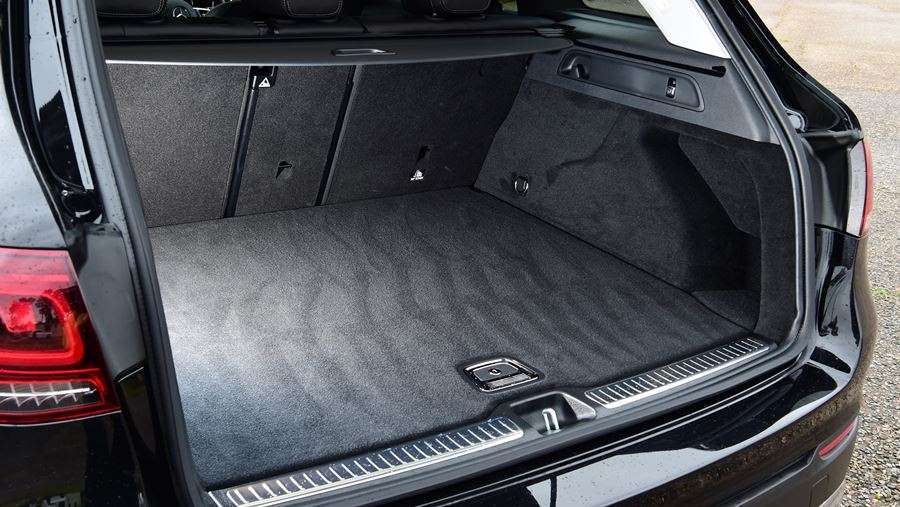
SPECIFICATIONS
Considering it’s an SUV, the GLC is easy enough to get into, as its doors open nice and wide. The steering wheel and driver’s seat have plenty of adjustment and there’s plenty of room in the back. Boot space is good, if not class-leading, but the plug-in hybrid offers noticeably less due to its batteries taking up some of the luggage room.
Mercedes GLC interior space & storage
The GLC offers a decent amount of leg and headroom in the rear, but the transmission tunnel can eat into space for the middle-seat passenger.
Interior storage is good, thanks to a generous space in the front armrest and a deep cubby in front of the infotainment dial in the centre console. The door bins can all hold bottles and rear-seat occupants get their own air ventilation and an armrest that features a storage cubby and two cup-holders.
Boot space
Total boot volume is about on par with a lot of the GLC’s rivals. The 550 litres on offer is the same as what you get in the BMW X3 and equal to the Audi Q5’s boot. However, it’s less than what’s available when you fold down the Land Rover Discovery Sport’s third row of seats. The GLC’s rear seats fold in a 40:20:40 configuration with the pull of a lever, offering extra versatility and more room in the boot if needed.
In the boot you’ll find the usual range of neat practical touches like anchor points for smaller items and a cubby either side to store bits and bobs. The boot itself is square and the opening is large, so getting awkwardly shaped items in should be a breeze, especially with the power-operated tailgate.
Compared to the 550 litres you get in petrol and diesel cars, the PHEV’s boot is a bit smaller at 395 litres. That’s only 25 litres more than in the A-Class hatchback but at least the boot floor is flat, unlike the annoying step in the boot of the E-Class plug-in. It also benefits from underfloor storage, so you can keep your charging cables separate from your shopping.
Towing
All diesel GLC models can tow 2,500kg – more than most versions of the Land Rover Discovery Sport, and matching the D240. Both the GLC 300 de and 300 e can also tow up to 2,000kg, which is an impressive amount for a plug-in hybrid.
Source: carbuyer.co.uk
2021 Nissan Kicks First Drive Review: Actually Kicking It Up a Notch
Small but welcome updates keep the nearly new Kicks SUV fresh and competitive.
If I'm entirely honest, the Nissan Kicks didn't have the makings of a hit when it was first announced for the U.S. market. Adapted from elsewhere in the world and a bit behind Nissan's own styling curve, it appeared to be a quick and dirty move to get something, anything in a suddenly hot segment. Driving it, though, revealed its charm. What it lacked in specs it made up in value and practicality. It surprised with a carefully chosen but impressive list of standard features and a genuinely enjoyable driving experience. Even so, Nissan has kept on top of updates, culminating in this smartly refreshed 2021 Nissan Kicks.
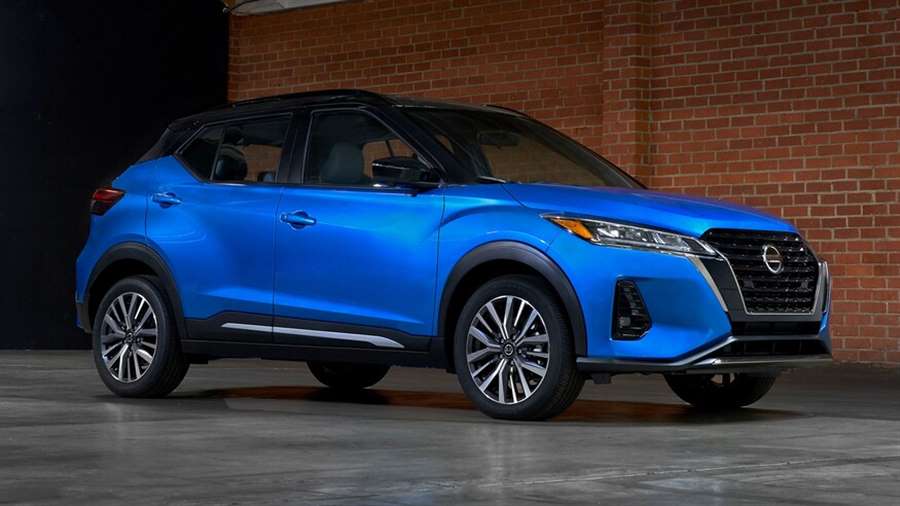
The biggest fix is right up front, where Nissan has given it a nose job. Although the Kicks has always had a fun, funky vibe going on, the old car's puckered face always made it look like it had already been on Nissan lots for years. Pumping up the grille and upgrading the headlights (all the way up to full LED units on the SR trim we drove) have gone a long way toward making the Kicks look like a new car rather than a retread. The rear end didn't need as much help but got it anyway for a net gain.
The most important work, though, was done inside. It sounds like a small thing, but a new center console is worth talking about here. Few things remind you of how cheap a car is as not having a center armrest for the front passengers. Nissan has fixed that with a full-length center console featuring an enclosed bin for your things, an armrest, and big cupholders. Deleting the old-fashioned handbrake made it all possible, and you get a modern electric parking brake as a bonus. Unfortunately, you do have to pay for it because you can only get it on the SV and SR trims. The base Kicks S keeps the old setup.
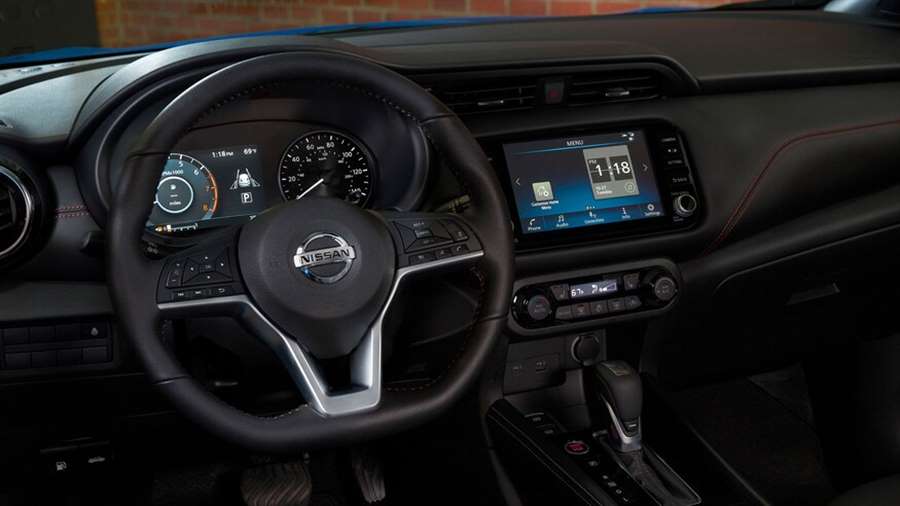
Hovering above all that is an updated infotainment system. Seven inches is standard, but it now provides Apple CarPlay and Android Auto functionality free of charge. The optional upgrade unit grows to 8.0 inches and now includes a Wi-Fi hot spot and over-the-air software update capability.
You have to look a little harder for the other big get. The Kicks has always had the hardware needed for adaptive cruise control but didn't offer the feature until now. Add it to the shockingly long list of active and passive electronic driver aids, which already got a big upgrade for the 2020 model year and most of which is standard on all models.
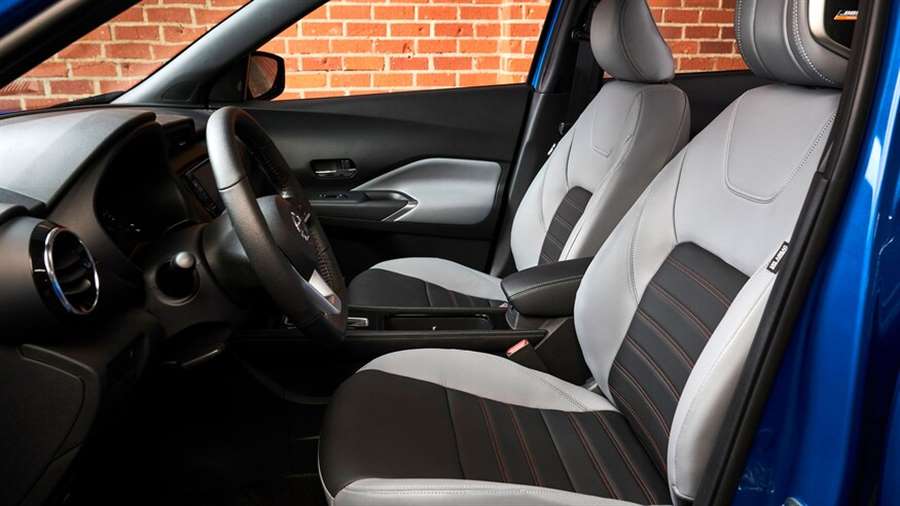
The new splashes of accent colors on the seats and doors are more visible. It's a small thing, but on a car with fun two-tone paint options, the black-on-black interior needed more pizazz, and it didn't take much to dress things up. The Kicks already felt like a screaming deal at $25,000 fully loaded (before dress-up accessories), and the '21 updates only make it feel like you're getting more for your money.
That feeling doesn't extend to the mechanical bits, but they were already doing a fine job. With only 122 horsepower and 114 lb-ft of torque and no substantial weight added, the Kicks drives exactly the same as it always has. Here again, there's nothing special on the spec chart, but Nissan does a lot with a little. Its simple suspension works quite well at providing a comfortable ride and chipper handling. It still has a bit of body roll, and the steering still feels disconnected, but somehow it's fun to swing around a corner when you get the chance.
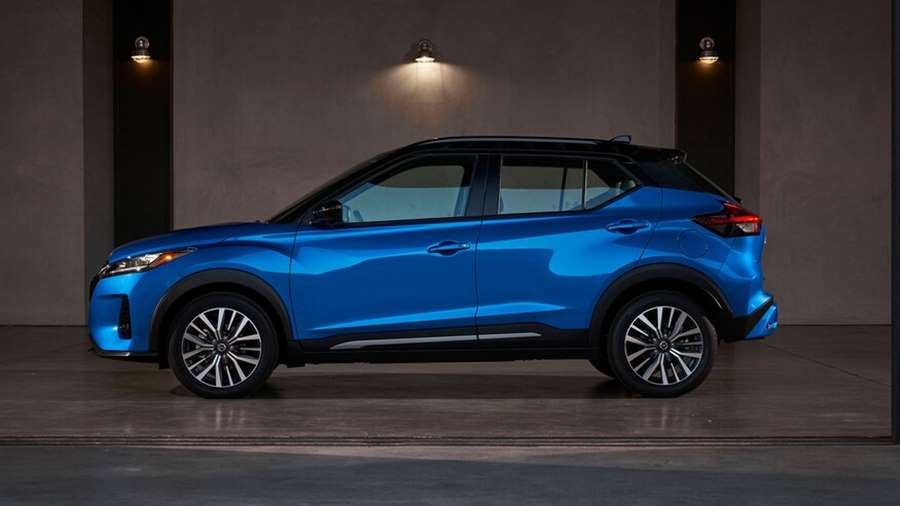
Similarly, the continuously variable transmission is tuned well to make it feel like the little engine is really trying. It's still among the slowest new cars on the road— it needs more than 10 seconds to get up to 60 mph—but its eager demeanor makes it feel quicker than it is. Meanwhile, it continues to get excellent fuel economy at 36 mpg on the highway.
It can get noisy getting up to speed and then cruising on the freeway, so I again have to recommend the SR Premium package if you can swing it. The Bose Personal Plus stereo included in the package delivers better sound quality than some luxury cars I've driven. It's an easy recommendation when the whole package, which gets you nice faux-leather seats, a security system, a cargo cover, and heated steering wheel and front seats, only rang in at $1,000 last year. Now, though, it includes the NissanConnect services, a WiFi hotspot, and over-the-air software update capability, so don't be surprised if the package price goes up.
Although Nissan hasn't released complete pricing yet, we do know the starting price has gone up by $430 to $20,595. That's still an incredible deal, though it's worth remembering the base model didn't get any upgrades. We're still waiting to find out how Nissan will price the SV and SR models with the new goodies. Even if those prices do go up a bit, the Kicks will likely top out in the neighborhood of $27,000, and that still could be a killer deal, especially now that there's even more to back it up.
I've always maintained the Nissan Kicks' greatest quality is its honesty. It's an inexpensive car that doesn't try to trick you into thinking it's something it's not. The good features aren't all reserved exclusively for the top trims or buried in dozens of add-on packages. Everything is straightforward and a solid value. It's a car that knows what features you actually want and delivers them with unpretentious style.
Source: motortrend.com

